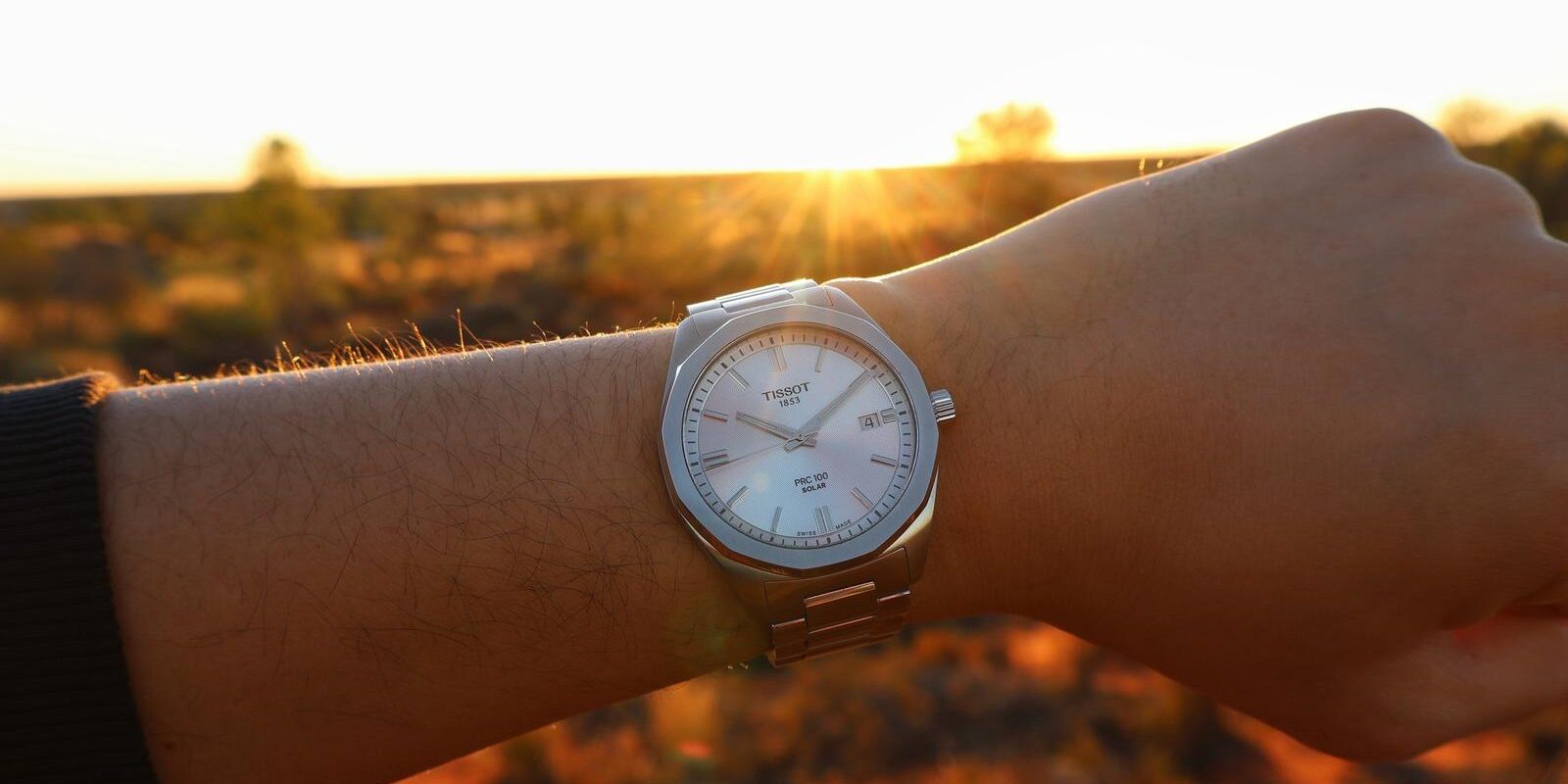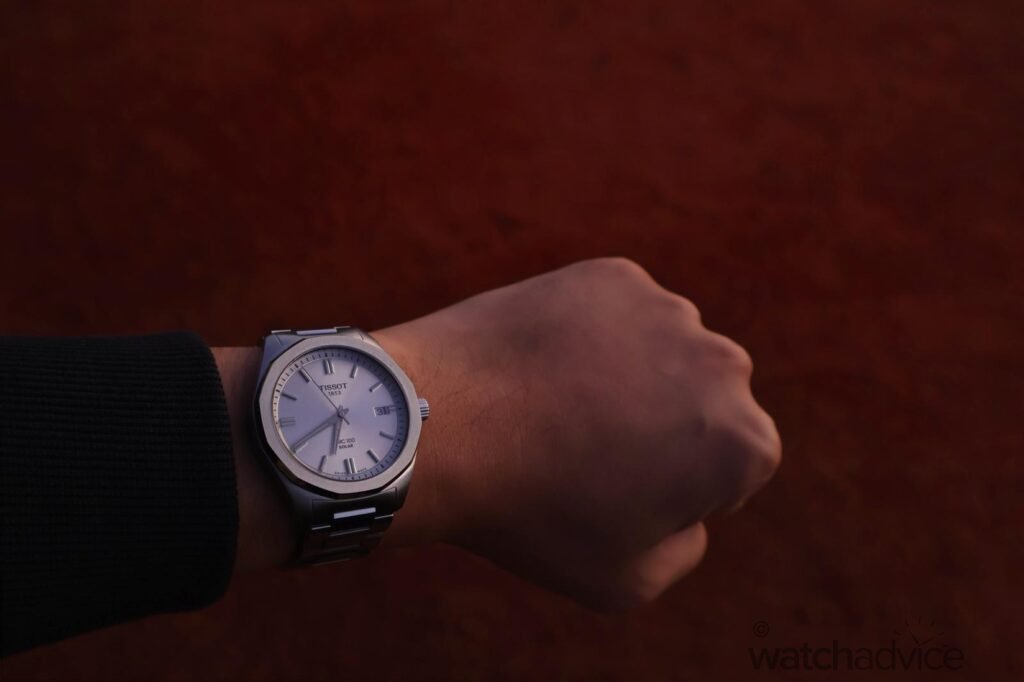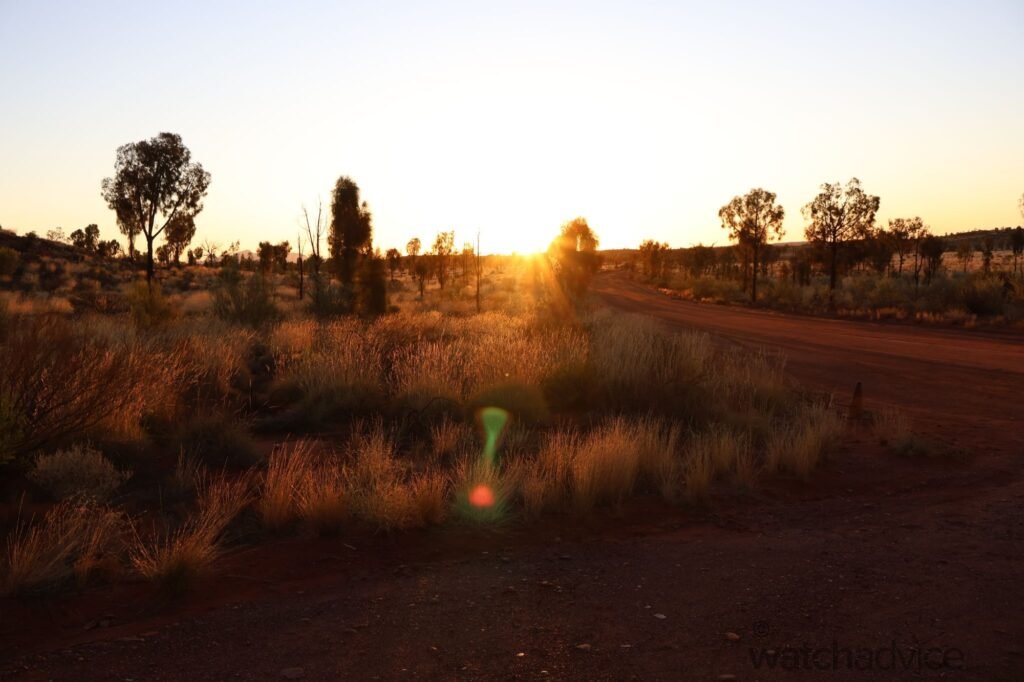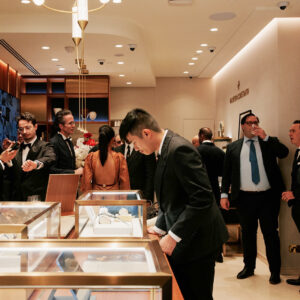As part of an official launch by Tissot, the Watch Advice team sent me on a mission to the Red Centre to witness what their newest offering was all about!
For us at Watch Advice, the beginning of April is important to us for a multitude of reasons. Not only does it signal the turn of a new month, but it also usually means the start of the world’s biggest watch festival: Watches And Wonders. For an entire week, we work ourselves crazy to keep up with the most incredible releases and all the best horology news coming out of Geneva, the epicentre of everything in the watch industry. Well… almost everything.
Around this time of year, the Swatch Group — one of the watch world’s most powerful conglomerates — loves to keep in contention with the other powers that be. Every year, they do their best to crash the party in Switzerland by unleashing some of their very best releases prior to Watches And Wonders, grabbing some of the horological hype that surrounds the buildup towards the festival. While this might come off as a rather competitive business decision, we at Watch Advice see it as an absolute win — More watches for us to cover and tell you about, and more watches for you to purchase!
Related Reading: Tissot’s PRC 100 Makes A Spectacular Return!
One of those releases was the Tissot PRC 100, which brought back of one of the Swiss brand’s most popular models of the early 2000s. It wasn’t just about nostalgia, though, as Tissot also introduced a new and revolutionary innovation in the solar quartz watch space: Lightmaster technology.
So, where better to test the watch than the sun-kissed deserts of Central Australia? Tissot seemed to think so, which is why they invited me to be part of a unique experience that puts the PRC 100 through its paces! So, with Chamath and Matt in Switzerland, and Sam holding down the fort back home, I packed my bags and embarked on a quest to the sprawling red deserts of Down Under!
Day 1
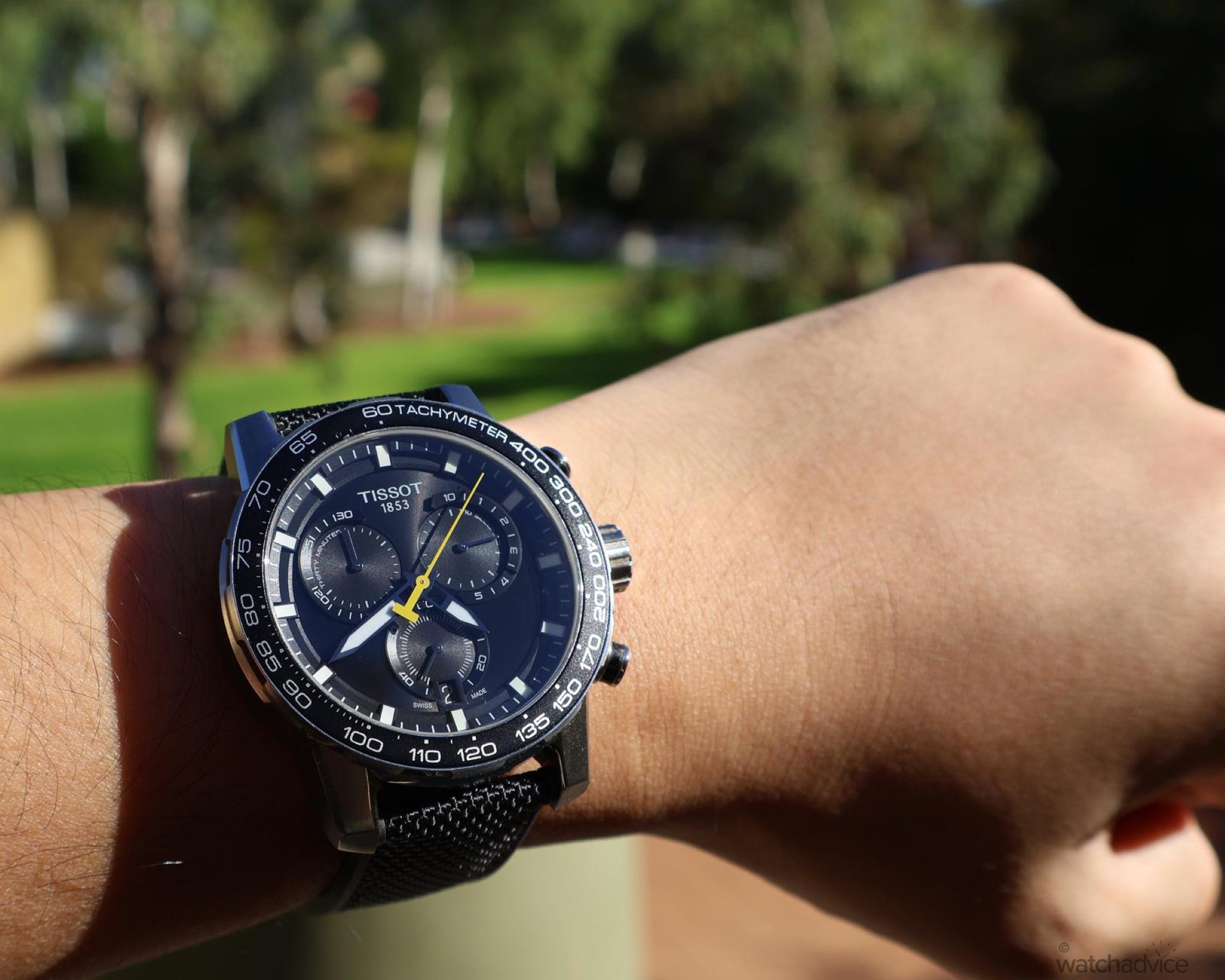
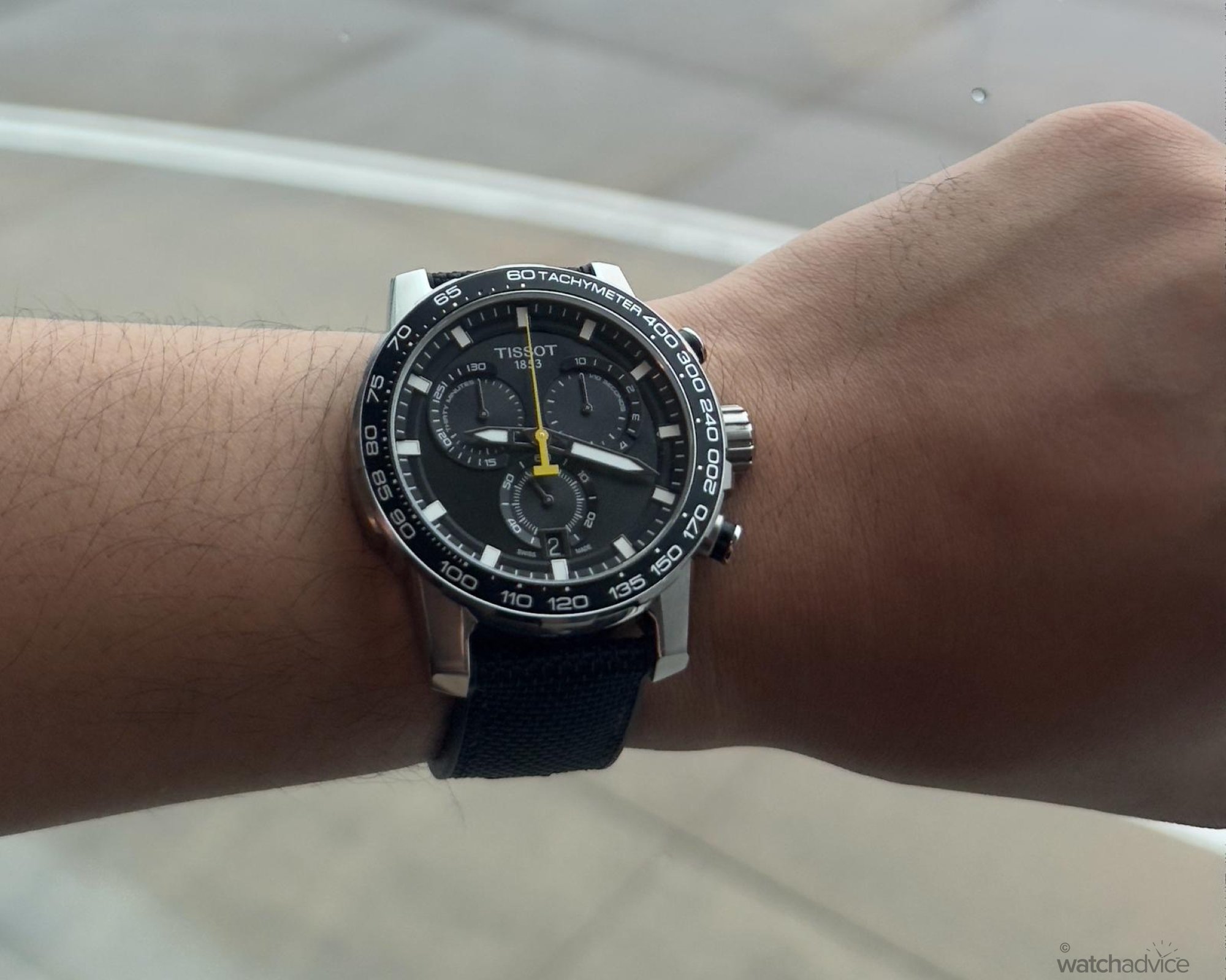
A rainy morning in Brisbane took me to the airport, where I mounted up for a 10am flight over to AYQ Airport. Because it was still Watches And Wonders week, though, I didn’t have a lot of time to rest and relax! I took the opportunity to smash out a couple of articles while I waited for the plane to land. In the final hour or so, the clouds scattered and gave way to a red sea of sand and dirt, unlike anything I had ever seen before. Because my camera was packed away, I took the opportunity to snap some choice shots on my phone.
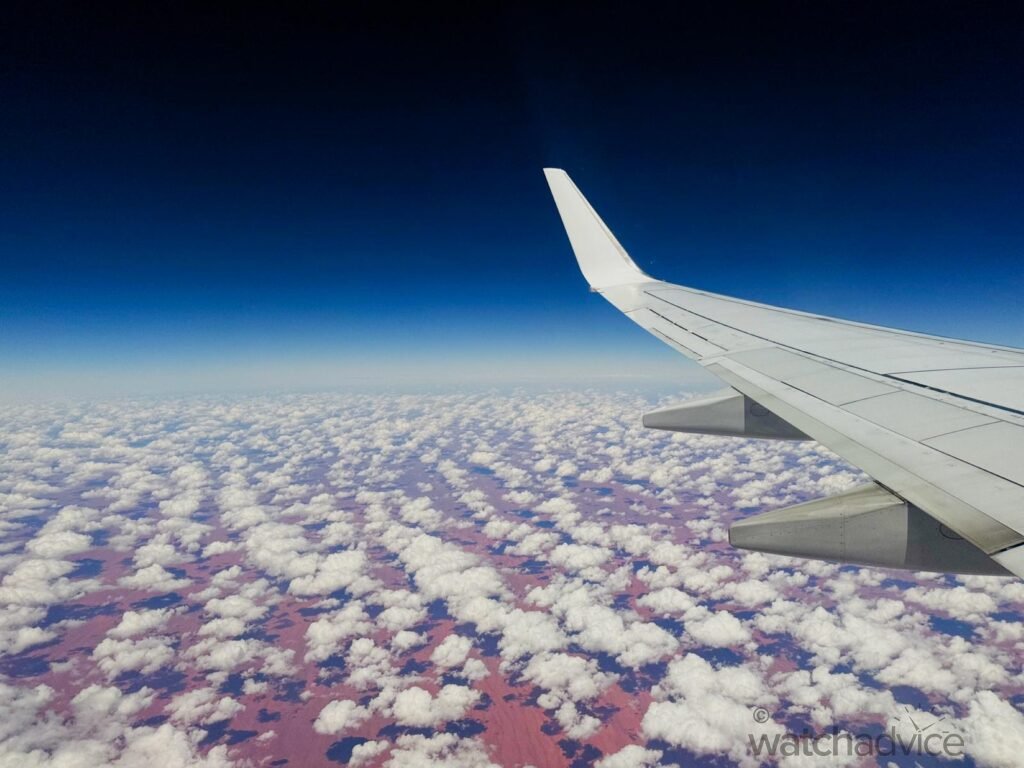
My plane was the last to arrive, and a courtesy shuttle took me the rest of the way to the town of Yulara, where I would be staying for the duration of my time there. I entered the hotel — Sails in The Desert — and got immediately lost as I tried to find the meeting room that we had been briefed to meet in. Once I did find it, though, I was greeted by Tissot Marketing Specialist Chun Zi May and Australian General Manager Daniel Rugman.
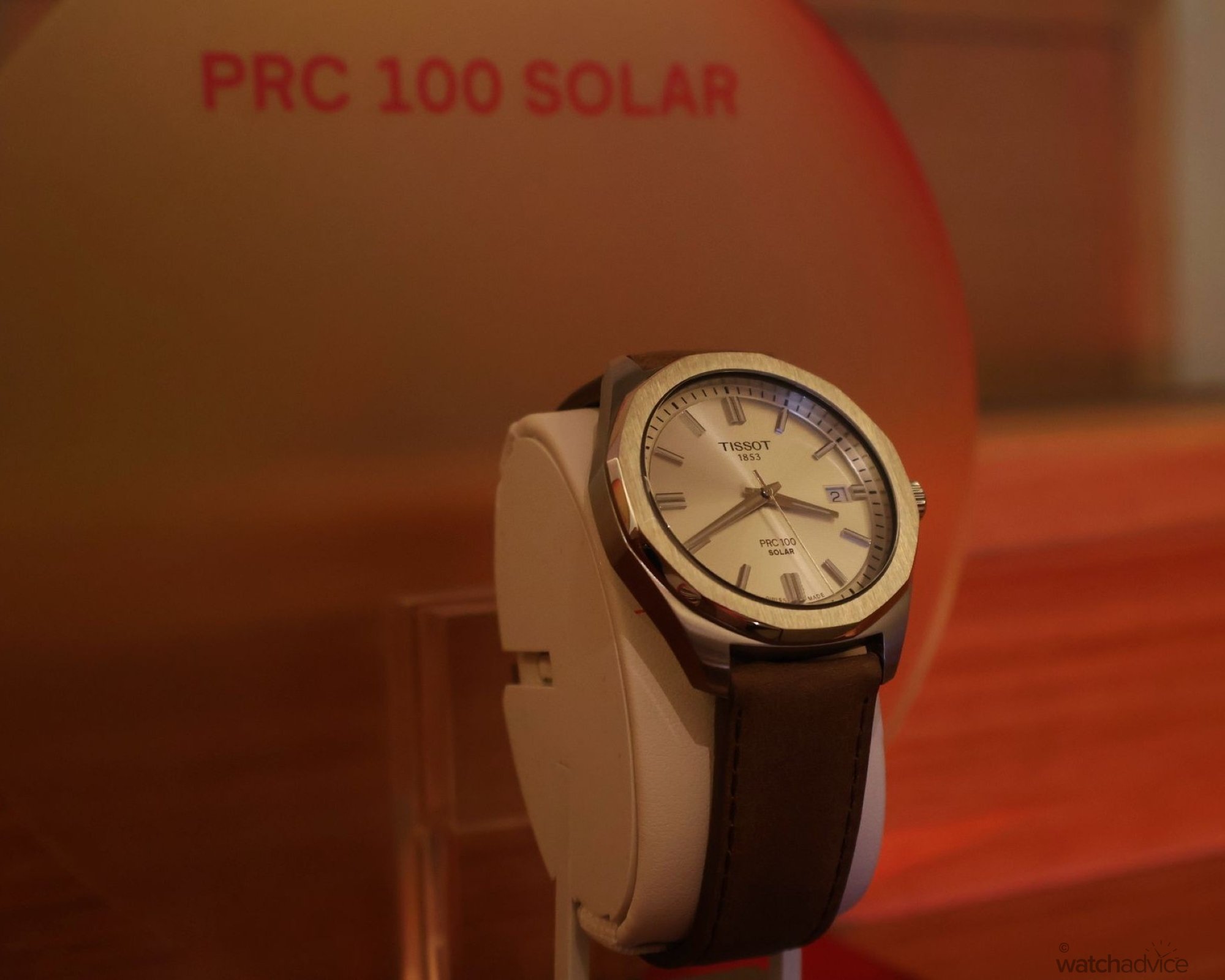
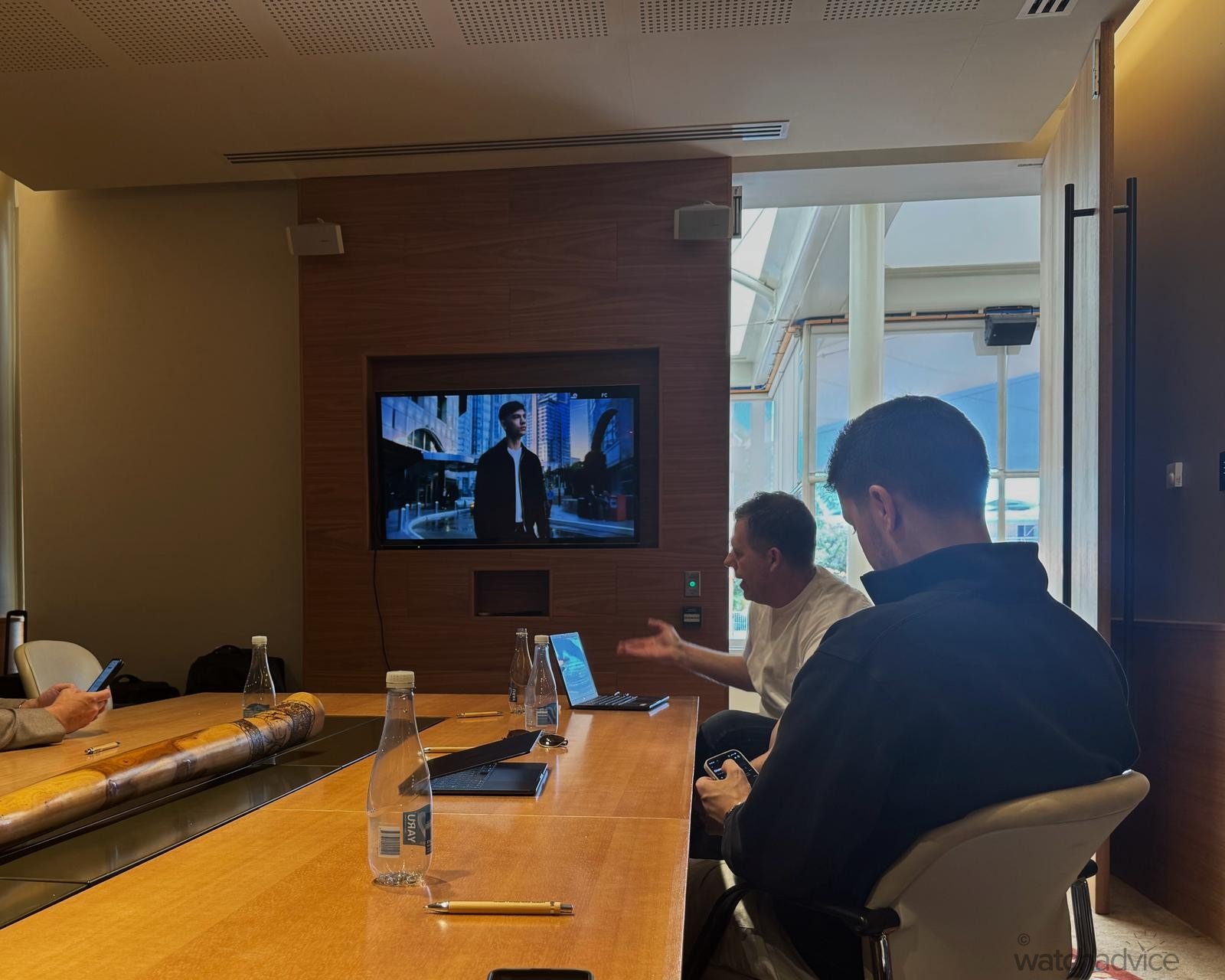
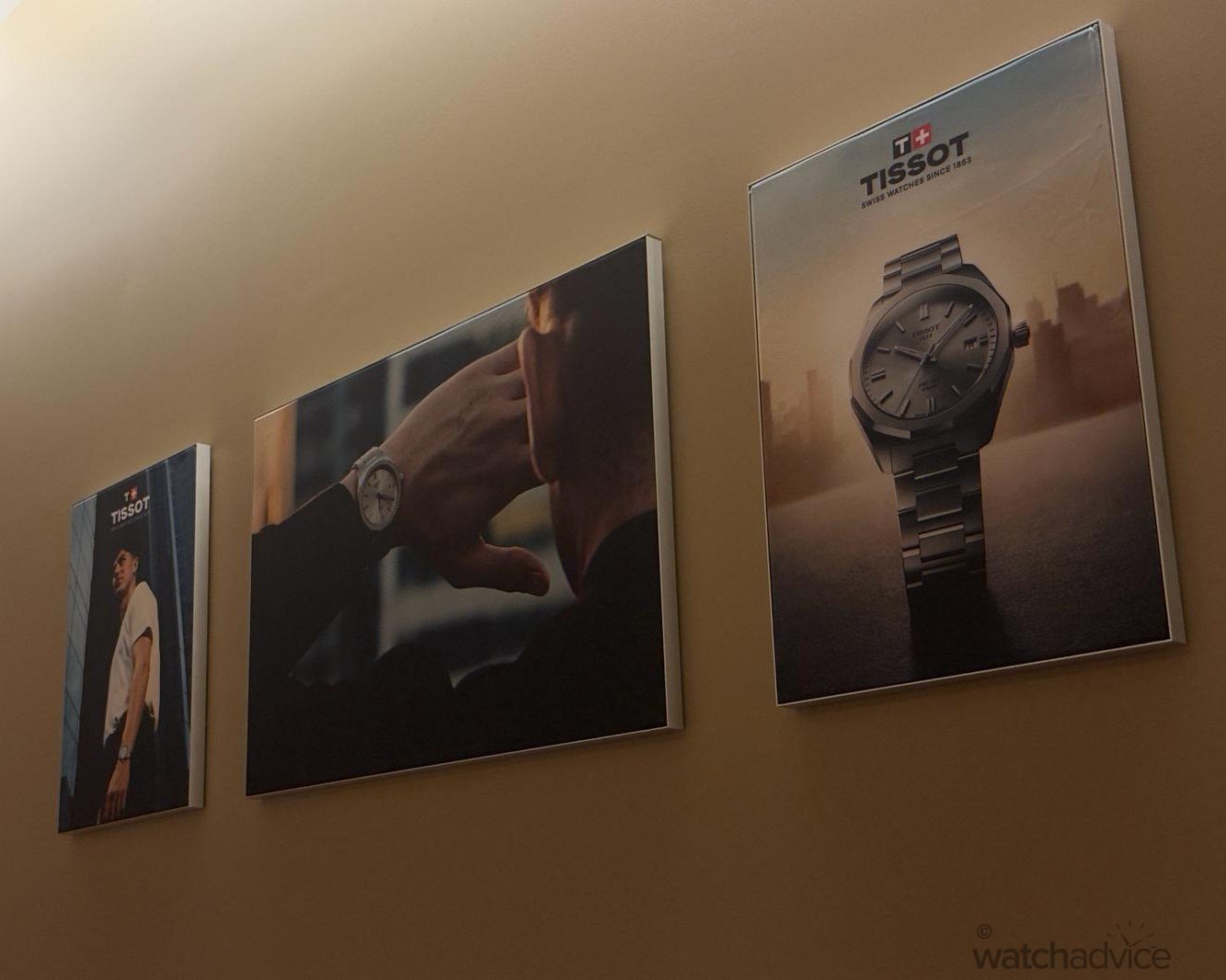
“[Tissot] invested 20 million Francs into developing the technology for the PRC 100… this kind of solar quartz technology, where the solar cells are mounted beneath the crystal, is unlike anything seen before in the watch industry.”
Daniel Rugman, Tissot Australia General Manager
Because I was the last to arrive, I wasn’t able to sit through the full briefing of everything to do about the PRC 100. Fortunately, a slight delay in my room preparation gave me ample time to pick Daniel’s brain about the launch. This informative discussion time gave way to a media briefing, after which we all went our separate ways to do our own activities prior to dinner.
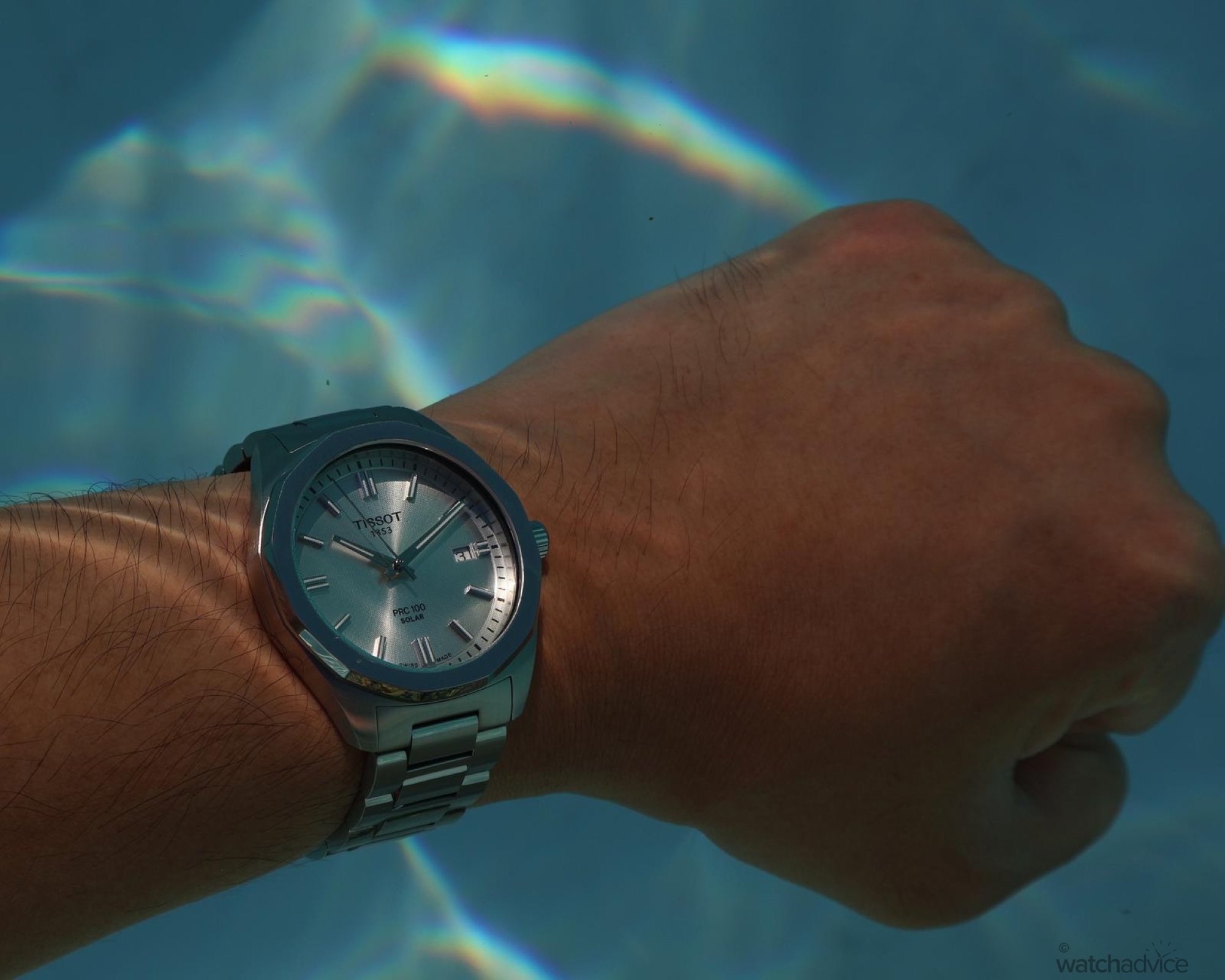
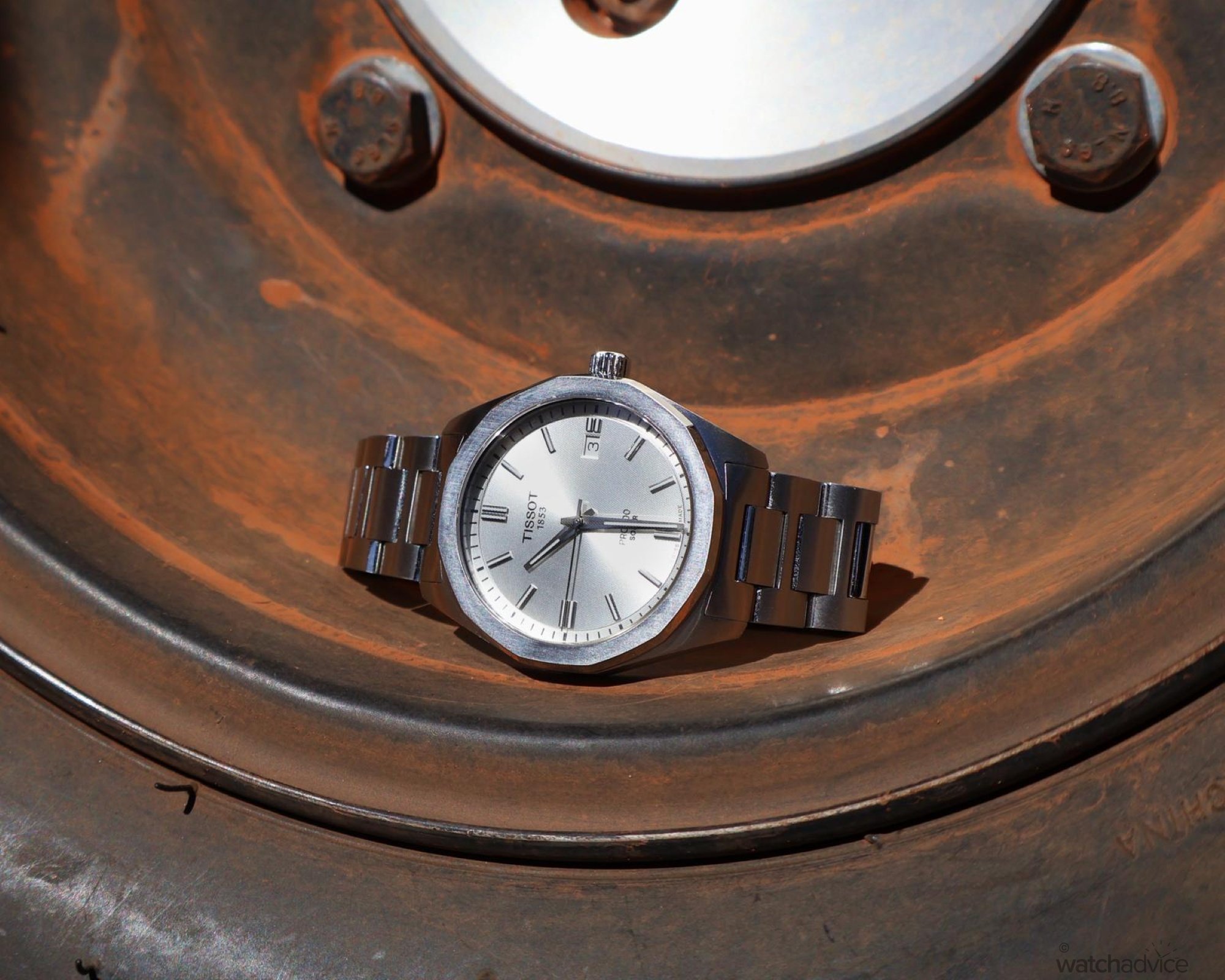
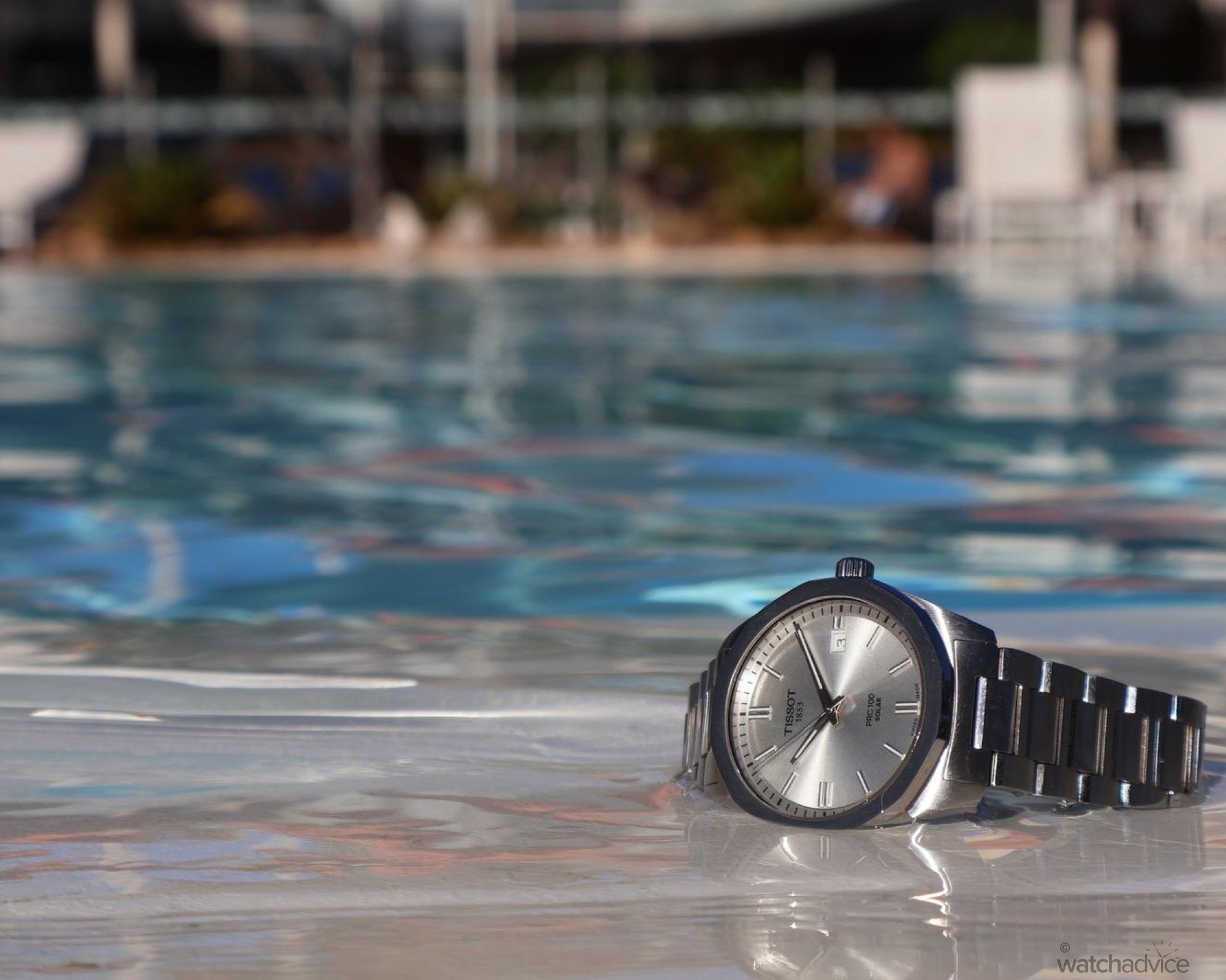
I would soon retire to my room, where I would be pleasantly surprised by my very own Tissot PRC 100, sized to my wrist and ready to wear! I donned it immediately, while photographing the other PRC 100s on display as best I could. Stay tuned for the official review of the Tissot PRC 100, though — I’ll be sure to go into more detail on my thoughts about it!
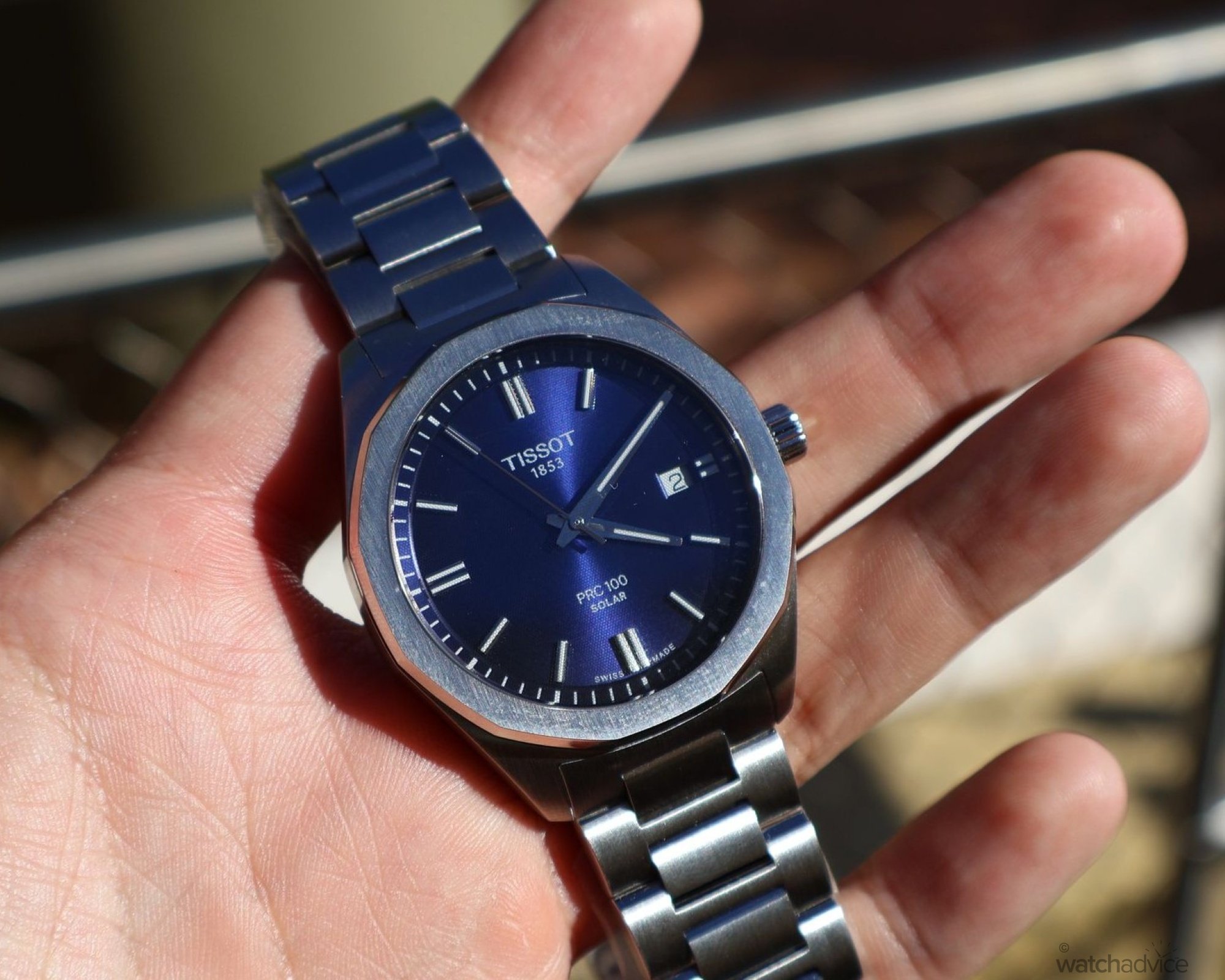
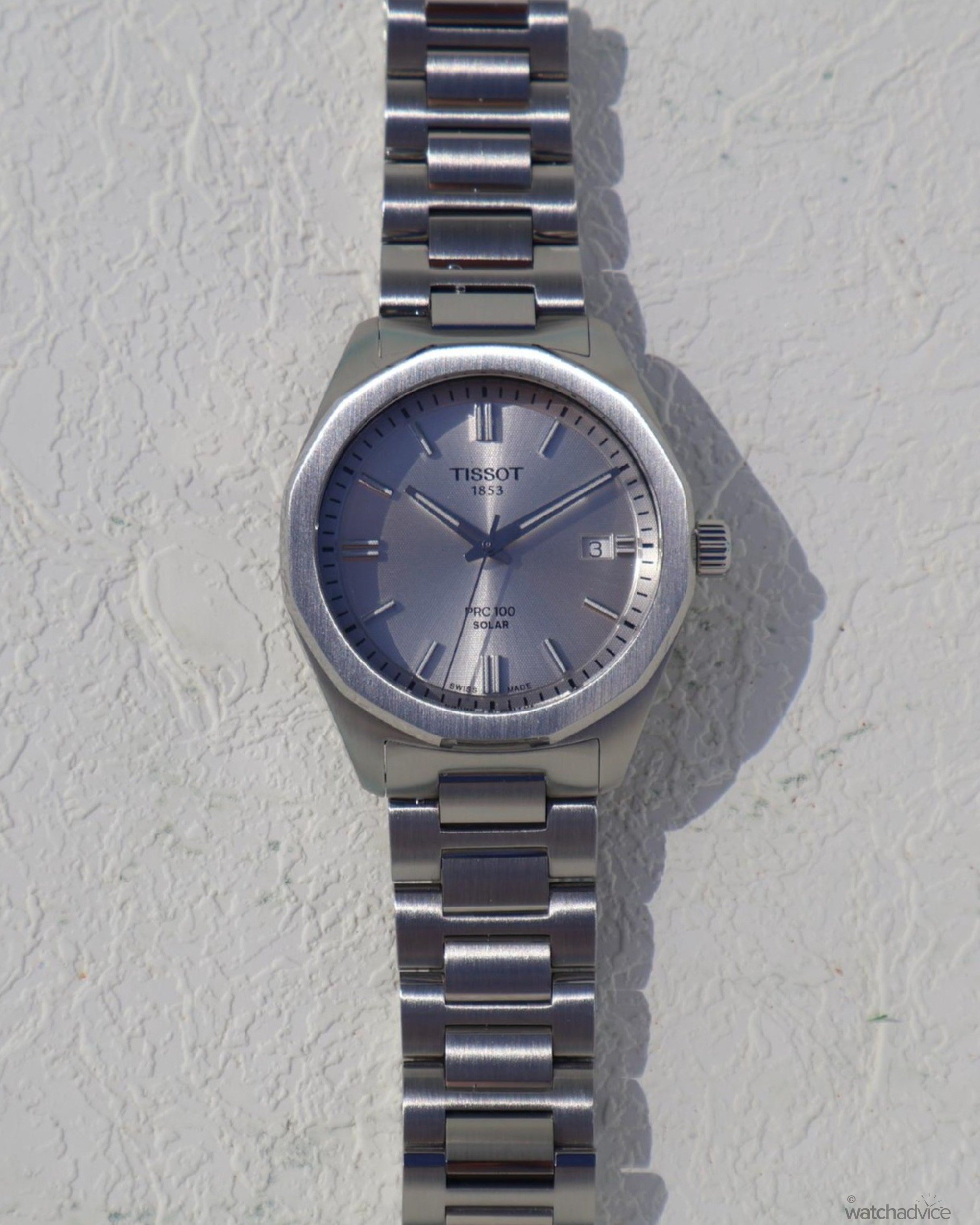
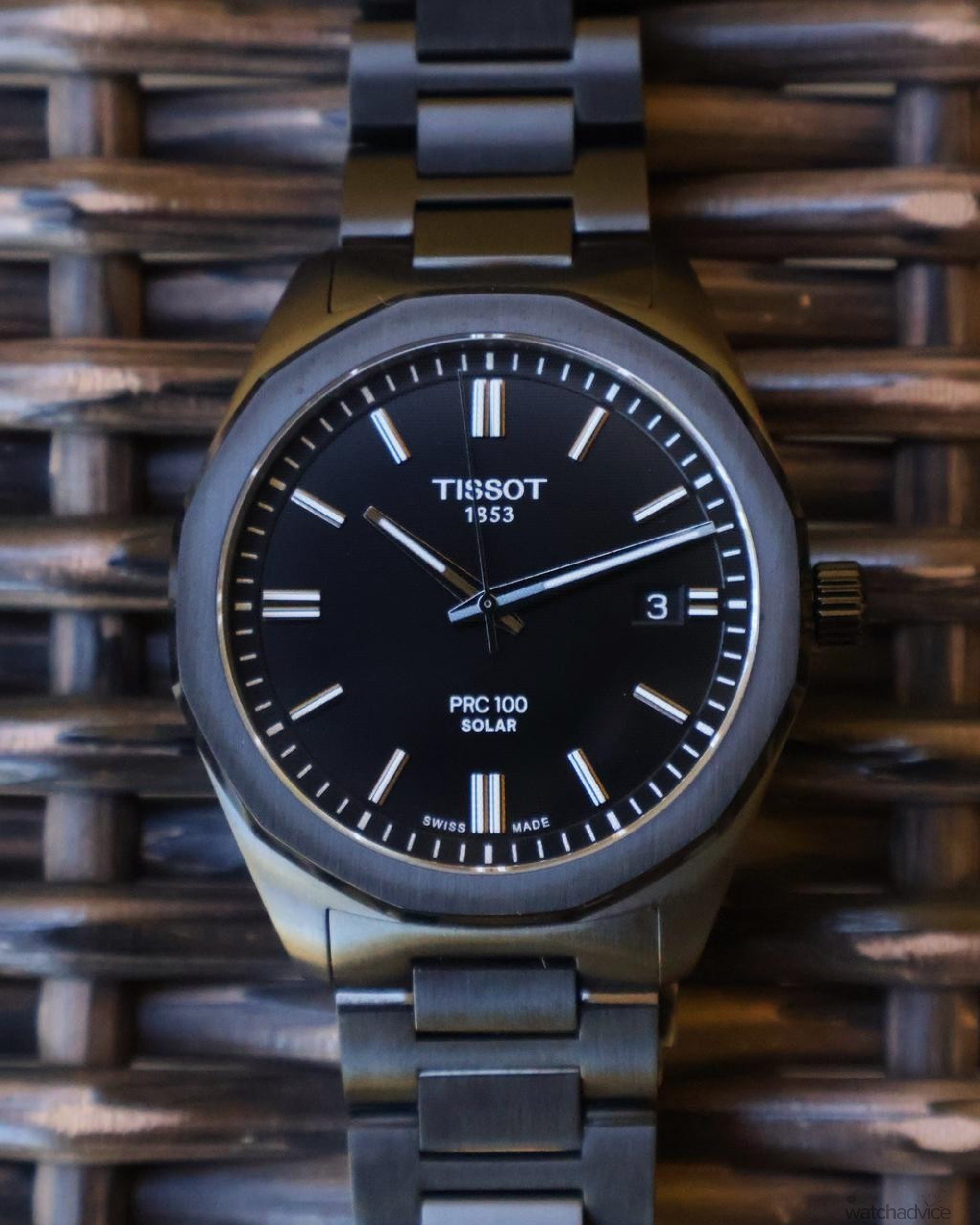
In-between photographing the watches (and marvelling at my brand new one!), I made sure to smash out a few more bits and pieces of work before my alarm went off, signalling me to freshen up and get ready for the first activity of my Central Australian travels. A shuttle bus whisked us to a beautiful hillside, overlooking the Field of Light. Spanning over the length of seven football fields, the brilliant display of over 50,000 lights came to life as the sun set, while we and the other guests dined on wine and canapés.
Soon, we would find ourselves within the Field of Light itself, in-between a star-studded sky and the dazzling array of colours surrounding us — the PRC 100’s lume included!. After snaking our way out of the installation, we would return via shuttle bus and, after gathering for a quiet drink in the Walpa Lobby Bar, we turned in for the night.
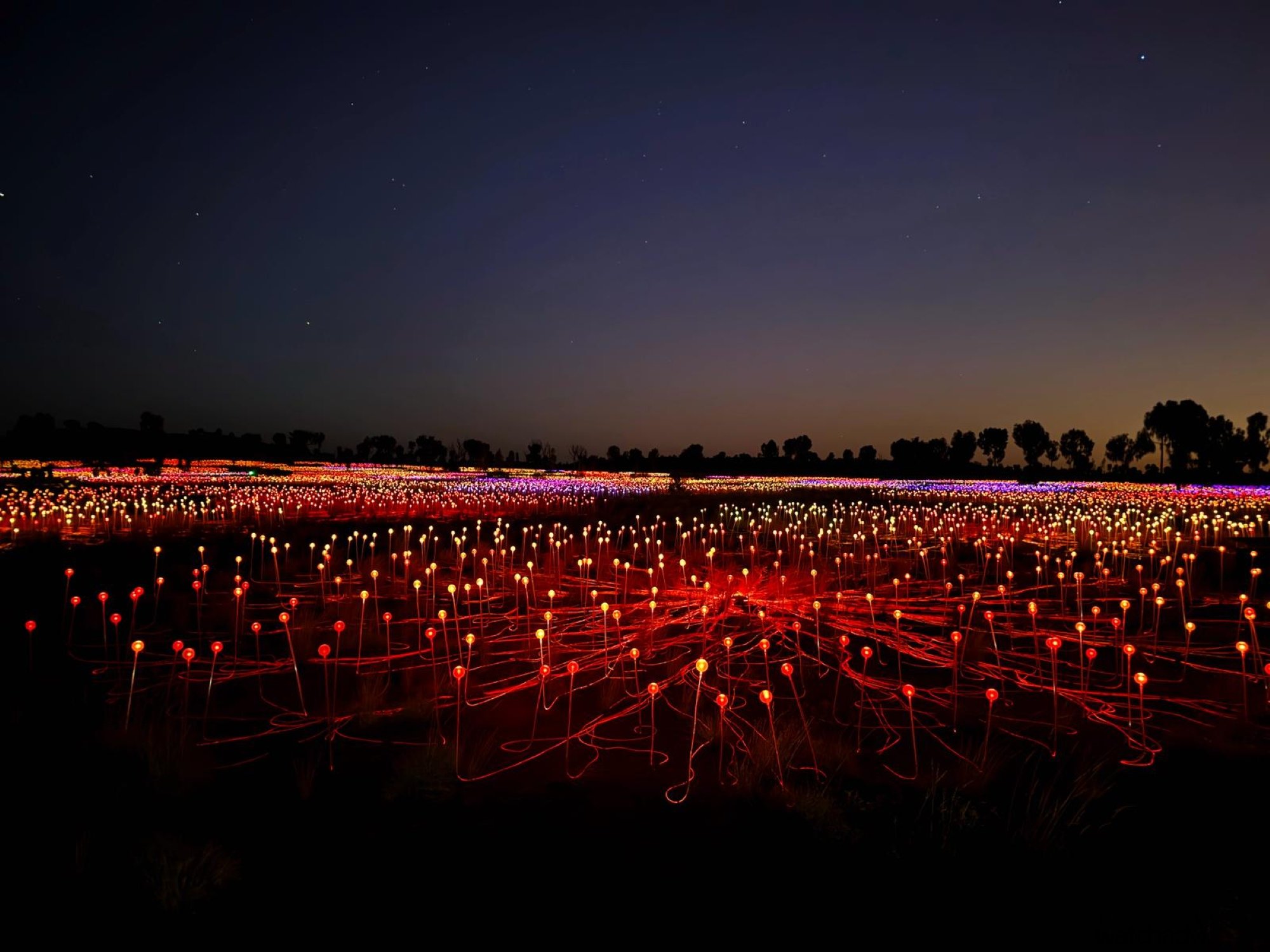
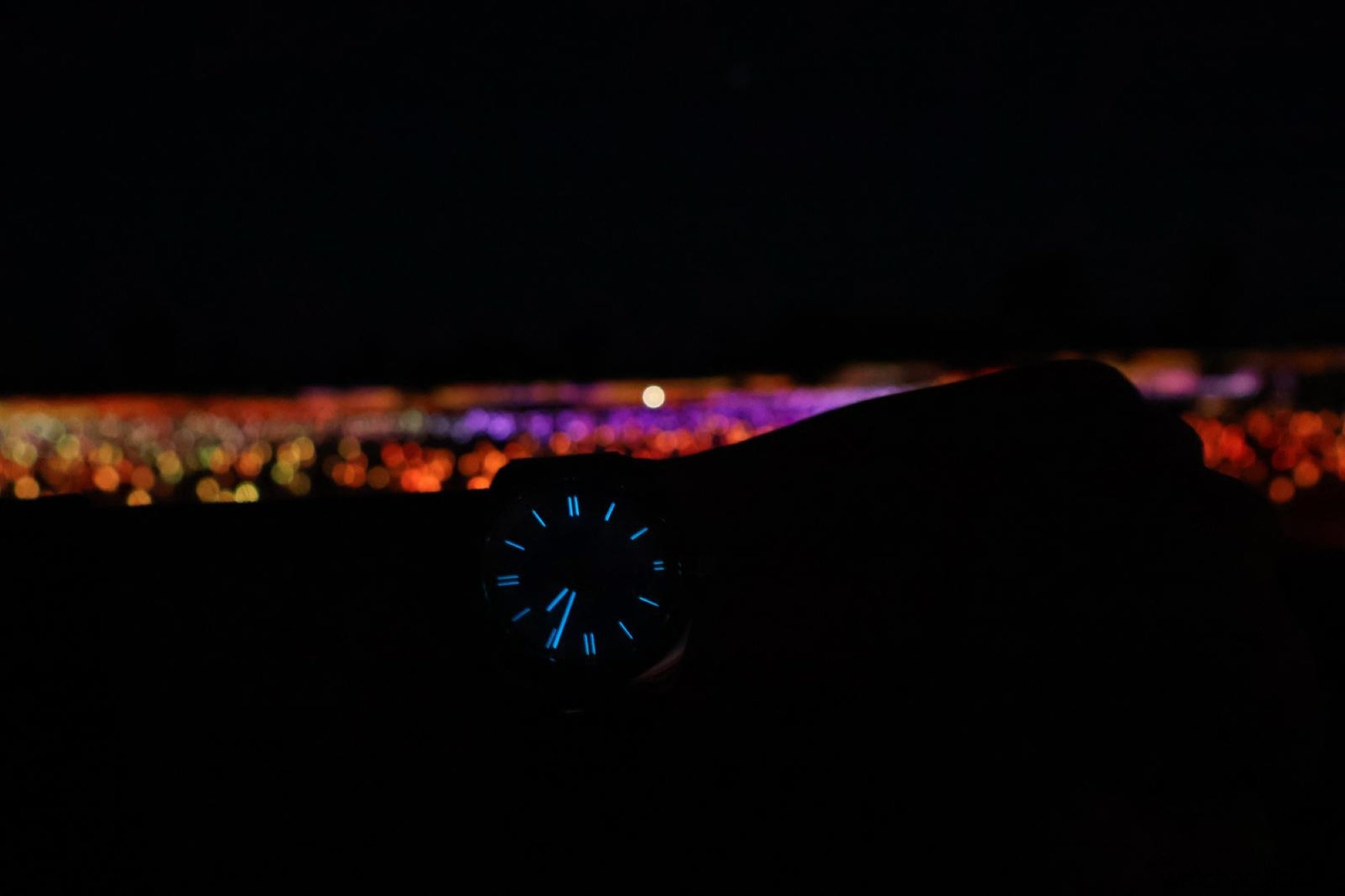
Day 2
The second day would turn out to be the busiest by far — and I was almost late for it! I suddenly realised I only had about ten minutes to get to the lobby, so I threw myself together and prepared for another day of exploration. First stop: A sunrise close-up of the incredible Australian monolith, Uluṟu. It was magical to see up close; a childhood dream of mine, in fact. Towering over everything else in sight, it’s a natural wonder that will forever be etched into my mind.
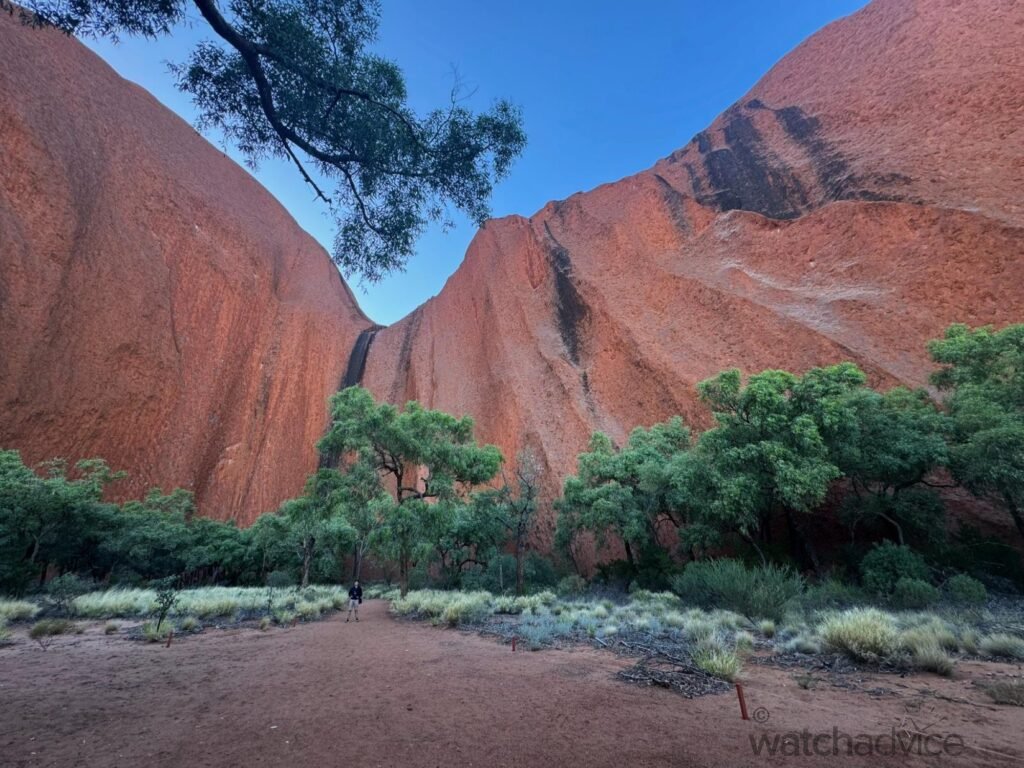
We also found ourselves on several hikes around the base of the giant rock, taking in the lush scenery and rich history that permeates Uluṟu. We were lucky, too — recent rainfall in Central Australia had significantly brightened the bushland, with vivid green flora standing in striking contrast to Uluṟu’s deep red backdrop.
Along the way, we were both shown and regaled with fascinating stories from the Tjukurpa — the cultural and spiritual knowledge of the indigenous Aṉangu. While I’d love to share some of these tales, especially those tied to the North-East face of Uluṟu, they are not to be told outside Aṉangu country. Truthfully, I don’t think I could do them justice anyway, so if you ever get the chance, come here and hear them for yourself!
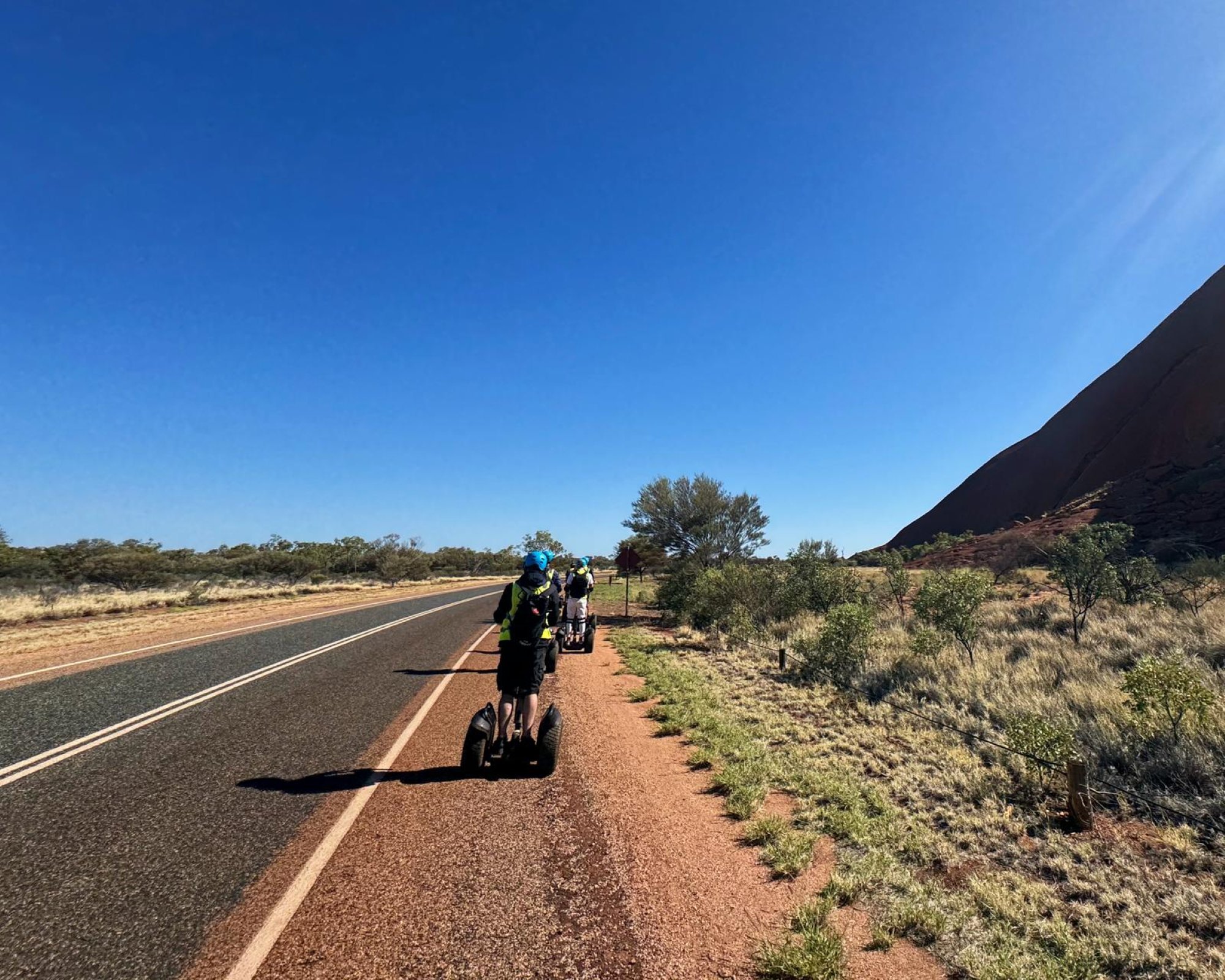
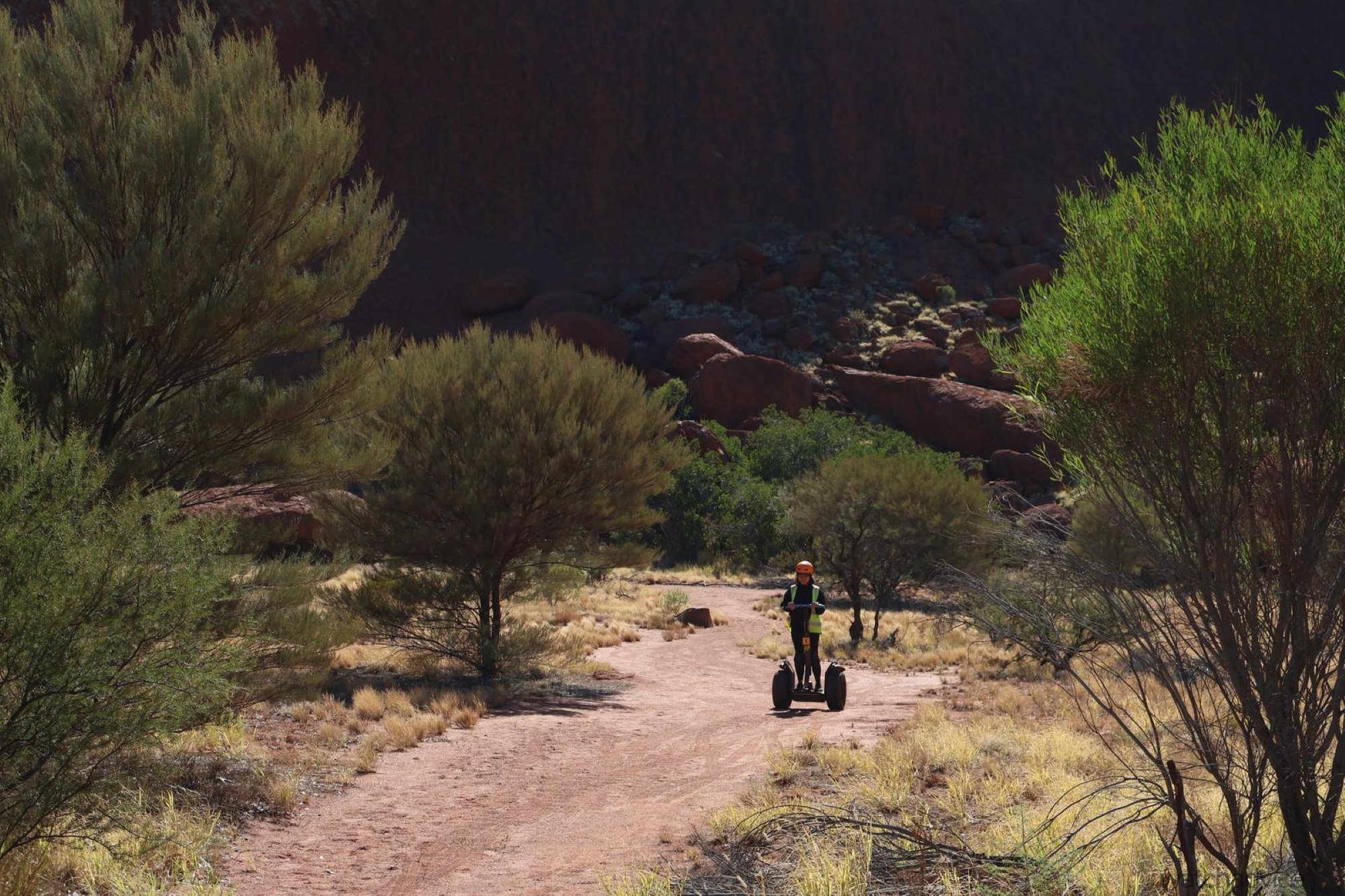
My favourite part of the ground-side tour, however, had to be the Segway ride. The recent rainfall presented a bit of a double-edged sword — while it brought the landscape to life, it also meant we couldn’t circumnavigate all of Uluṟu. Turns out, Segway tires don’t take kindly to mud. Still, gliding around part of Uluṟu on a Segway was wonderful, and yet another part of the trip I won’t soon forget.
Later on, I would take to the air once again — though not on a flight home just yet! I was whisked back to AYQ and packed into a prop plane for an aerial tour of Uluṟu–Kata Tjuṯa National Park. The flight offered stunning views of Kata Tjuṯa, another Central Australian formation that often flies under the radar compared to its more famous neighbour, but left me equally, if not more, awestruck. While I had brought my camera along almost explicitly for this part of the experience, I feel that photographs could hardly equate to the in-person beauty of both destinations.
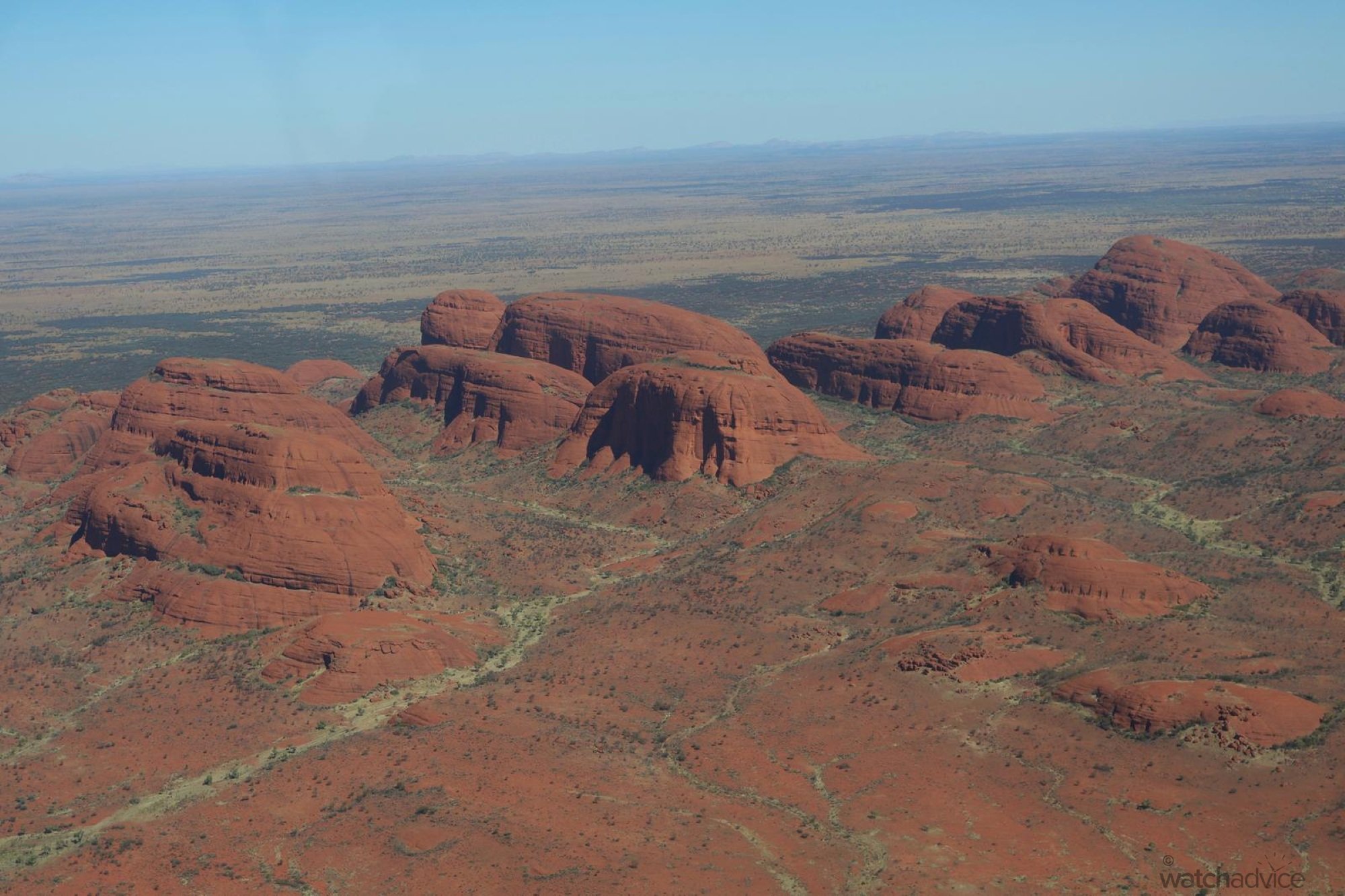
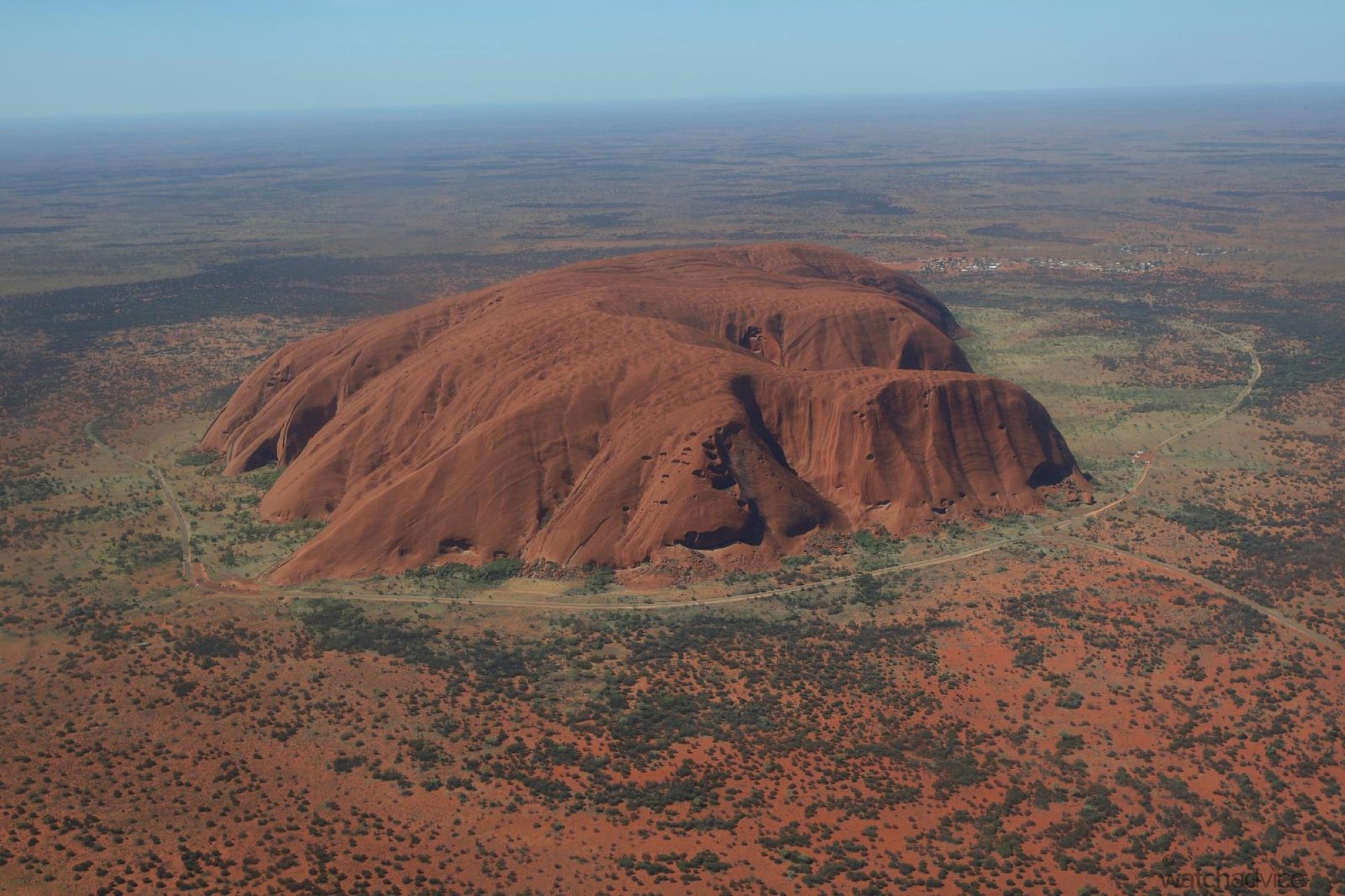
While I would’ve been content to stay in the clouds forever, the time eventually came to return to Earth. Back at the hotel, I took a moment to freshen up and get some work done before the final item on the itinerary: dinner at Tali Wiru.
Goodness — what an experience! Reuniting with the other guests, we were treated to an open-air dinner like no other. A sunset view of Uluṟu, a tasting of native ingredients, and four beautifully crafted courses — each paired with wine – was all included as part of the night’s events. I’m not usually a wine person, but some time spent in Italy a few months back had trained my palate enough to truly enjoy every dish to the fullest (no pun intended).
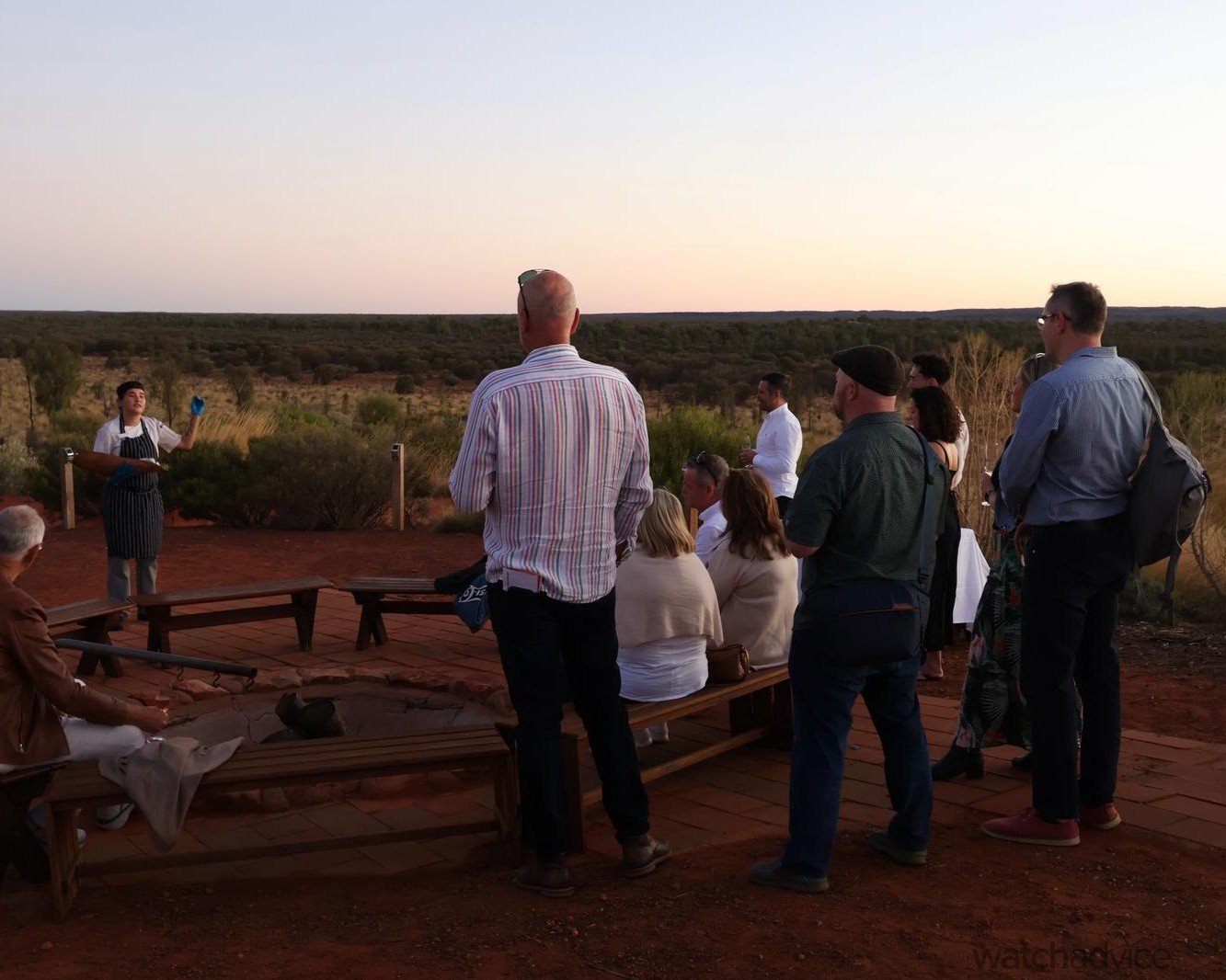
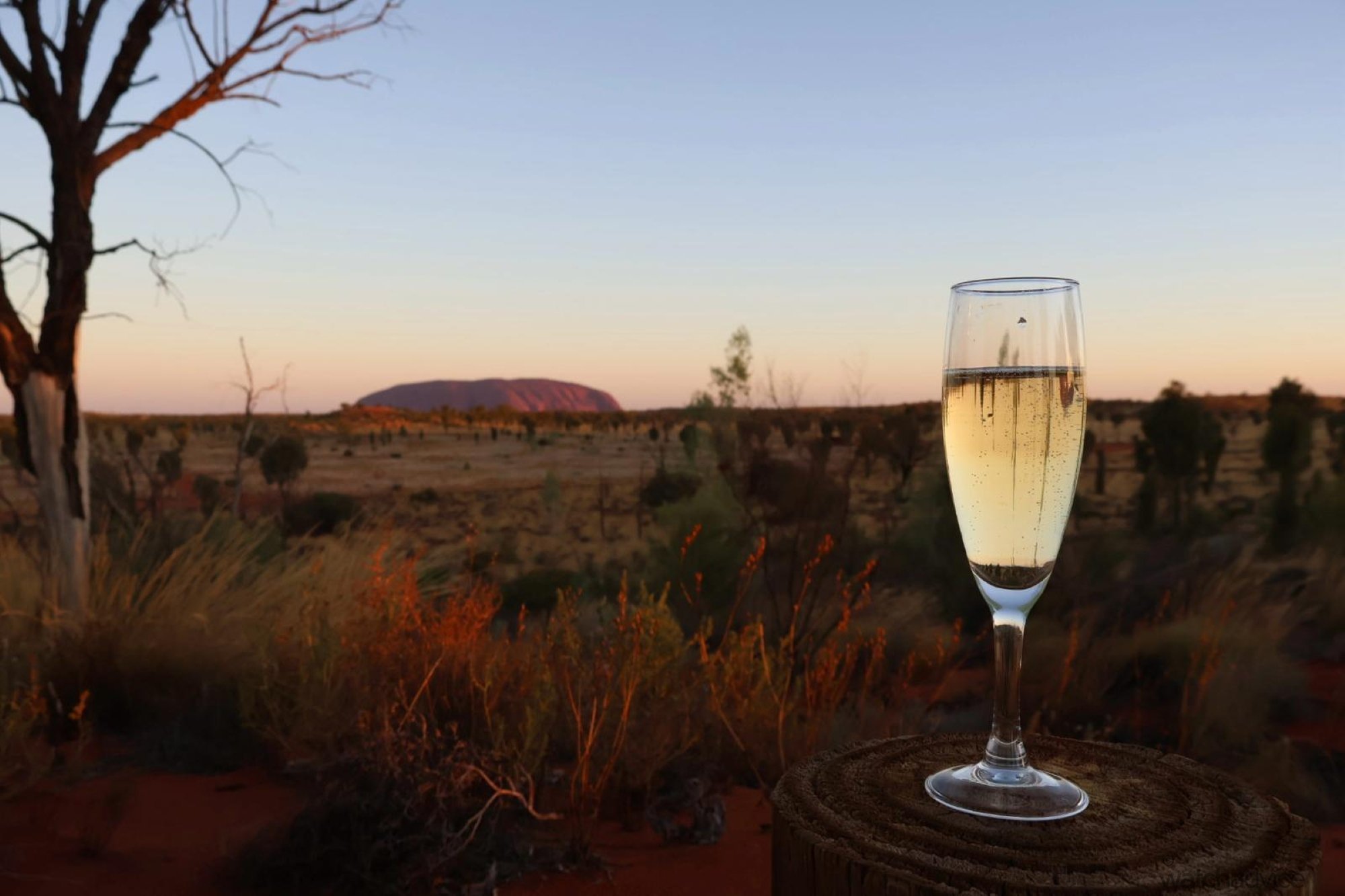

We talked, laughed, and reflected on our adventures as the evening wrapped up with stargazing and bush yarns under the clearest night sky I have ever seen. Eventually, we were all brought back to the hotel — a little more connected, certainly a lot fuller, and ready to say our farewells.
Day 3 & Closing Thoughts
Though the last two days certainly called for a long rest, I wasn’t about to miss the sunrise on my final morning. I woke up early — this time ahead of the alarm — and stepped out into the darkness toward one of the many vista points around Yulara. After childishly racing a speed limit sign on foot (which clocked me at a mere 20 km/h), I made my way to a lookout offering an unobstructed view of the landscape.
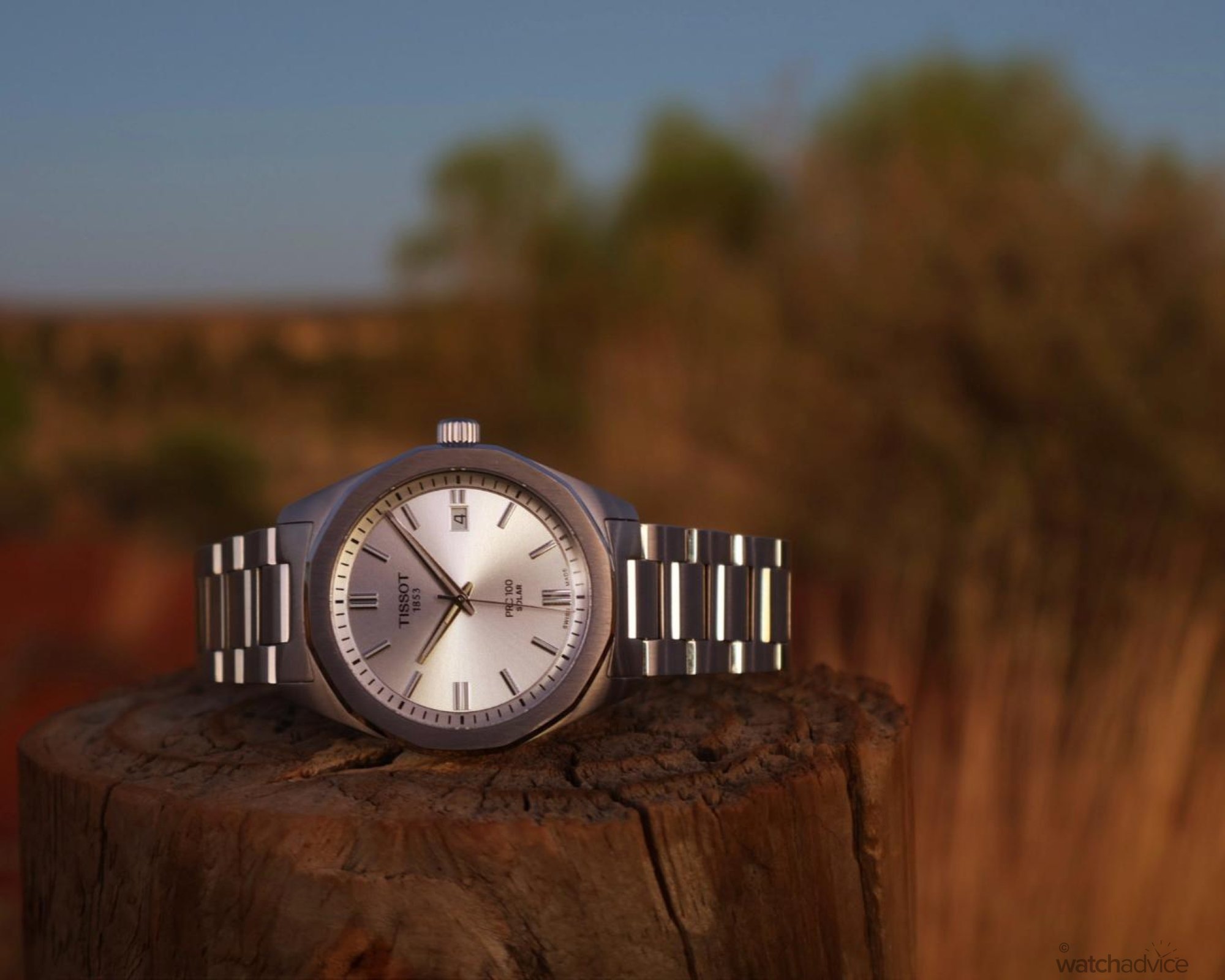
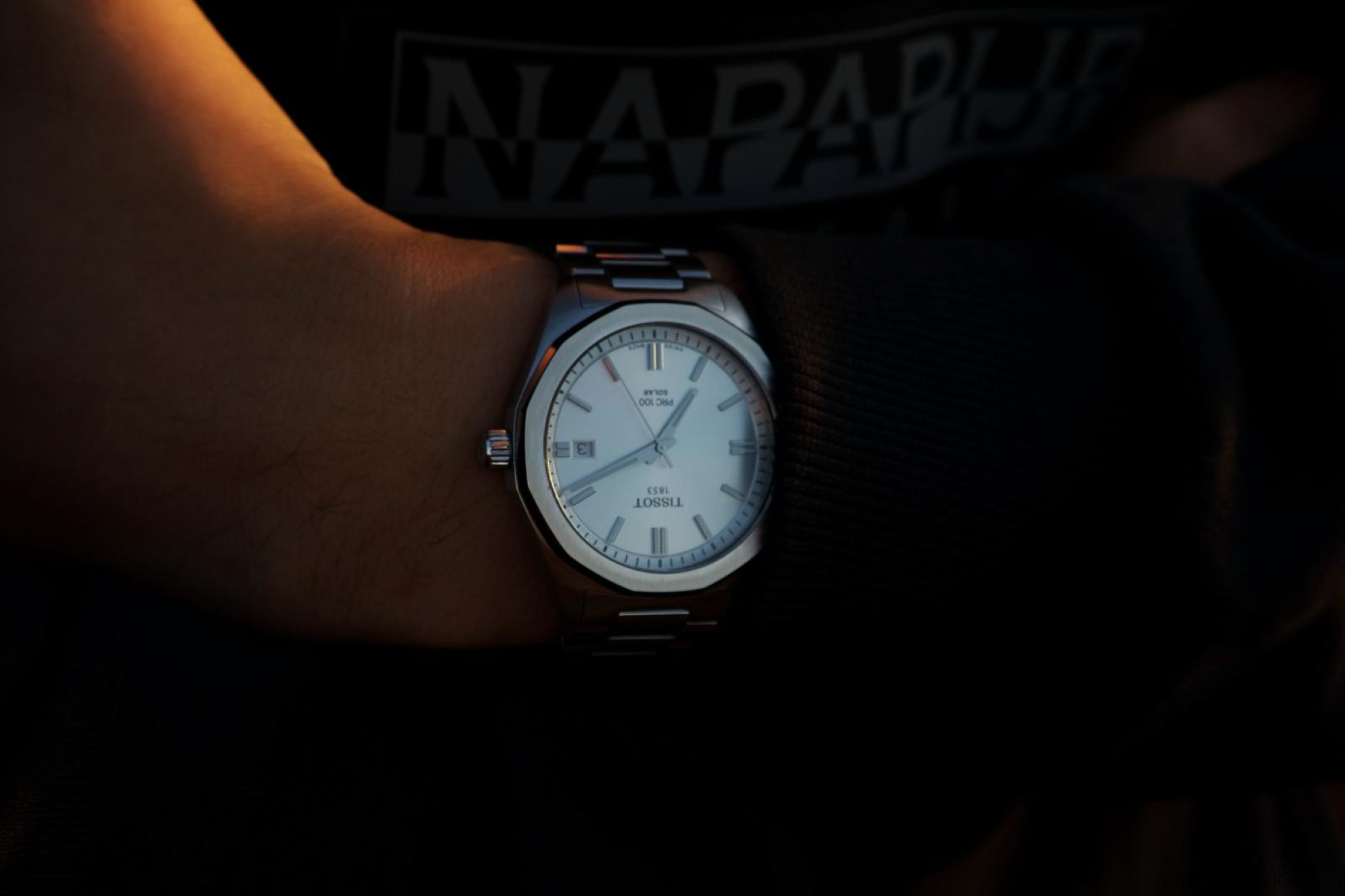
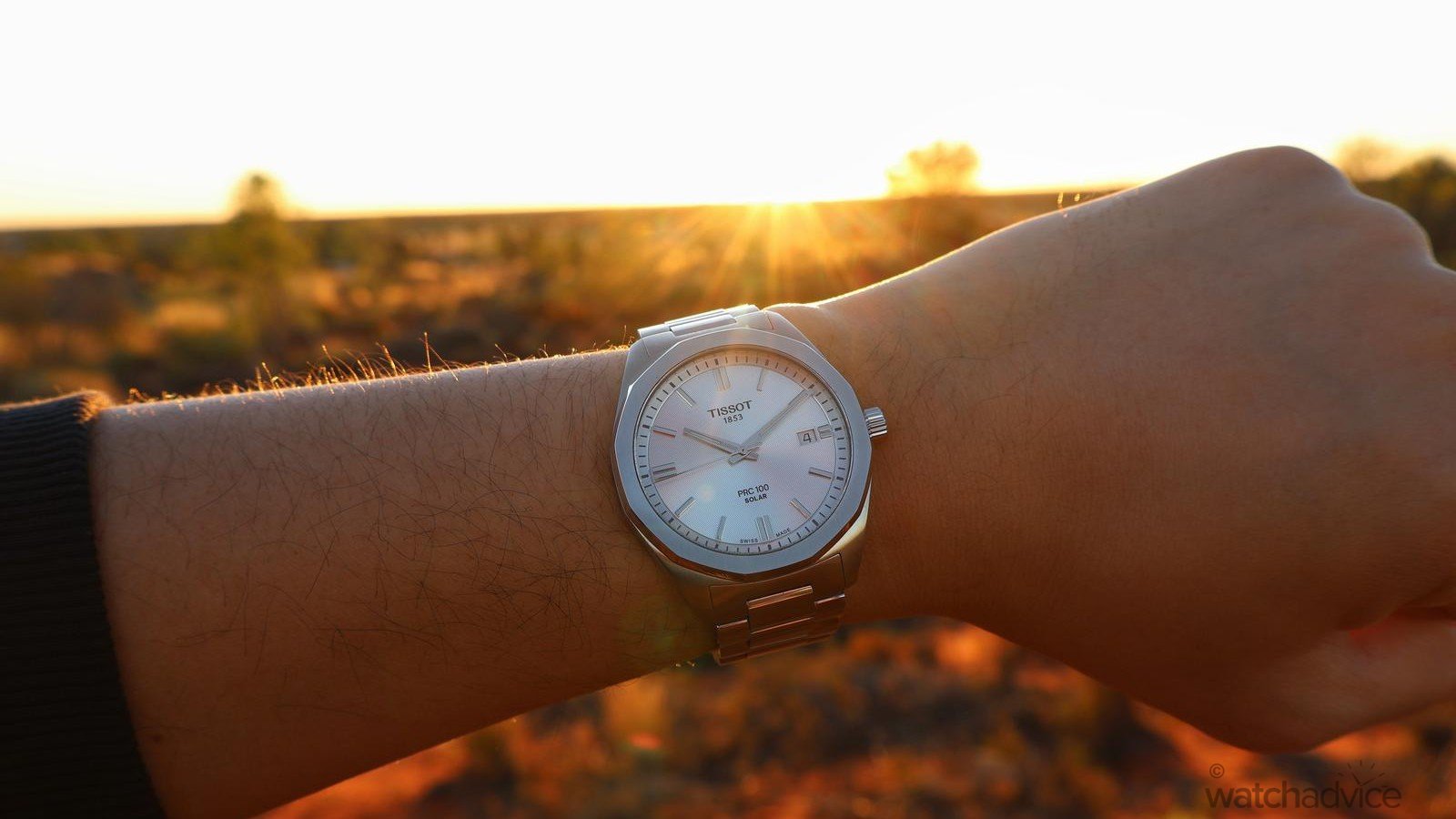
There, I spent the sunrise capturing a few final shots — of the vast desert expanse, and of the PRC 100 that had accompanied me every step of the way. I was genuinely impressed by how well the watch held up throughout the trip — durable, reliable, and completely at home in the Red Centre. Once I wrapped up, it was time to prepare for the journey home. I trudged back to the hotel for a final breakfast, packed my bags, said my goodbyes to Chun, Daniel, and the rest of the group, and got ready for the airport shuttle.
As sad as it was to leave Central Australia behind, I’m immensely grateful to have been part of this experience alongside Tissot. Having never ventured this deep into my own country, I wasn’t sure what to expect, but both the watch and the journey exceeded anything I could’ve imagined.
It was an unforgettable time, shared with incredible company, and I know these memories will stay with me for ages to come. It’s another double-edged sword, though — I’ll do my best to stay objective in my upcoming review of the Tissot PRC 100, but it definitely holds a sentimental edge that’ll be tough to ignore!


